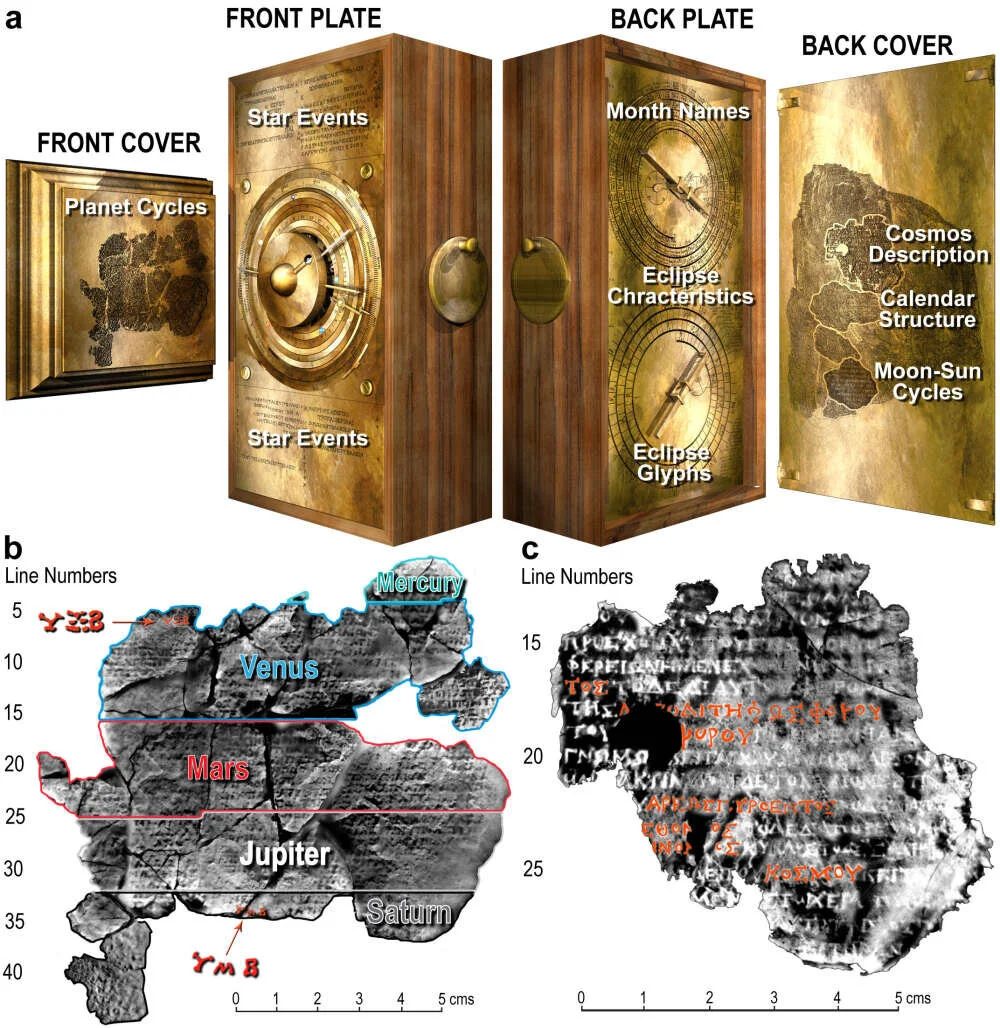In the 120 years since its discovery, the Antikythera Mechanism has amazed and perplexed researchers and the general public.
By Dr Alfredo Carpineti
This ancient Greek hand-powered mechanical device is considered the world’s first analog computer and was used to predict the positions of the Sun, the Moon, and the planets as well as eclipses.
In a new paper published in Scientific Reports, a multidisciplinary team from University College London (UCL) have produced a new model for how the device might have worked and looked like, claiming this to be the most accurate digital replica of it yet.
The Antikythera Mechanism was discovered in a Roman shipwreck by Greek sponge divers in 1901. Only about one-third of this incredible device survived, divided into 82 fragments. Reconstructing it is not just a matter of archaeology but also of engineering, astronomy, and mathematics.
"Ours is the first model that conforms to all the physical evidence and matches the descriptions in the scientific inscriptions engraved on the Mechanism itself," lead author Professor Tony Freeth said in a statement. "The Sun, Moon, and planets are displayed in an impressive tour de force of ancient Greek brilliance."
Showing the disposition of the inscriptions on the external plates of the Antikythera Mechanism. Image credit: ©2020Tony Freeth
The device was made of bronze and allowed the user to predict astronomical events using phases of the Moon, the positions of the planets, and eclipses using a complex combination of gears. The cosmos display had moving rings with beads marking the planets that could be adjusted.
In 2005, researchers used X-rays to better detail these fragments and discovered thousands of text characters indicating a description of what the actual device looked like.
The cosmos display of the new digital model of the Antikythera Mechanism. Image credit: ©2020Tony Freeth
However, a complete understanding of how the complex gearing at the front of the device eluded researchers until now.
The new observations have shown two important numbers: 462 years and 442 years. Those represent the apparent cycle of Venus and Saturn from Earth. This was not something the researchers expected to find.
"The classic astronomy of the first millennium BC originated in Babylon, but nothing in this astronomy suggested how the ancient Greeks found the highly accurate 462-year cycle for Venus and 442-year cycle for Saturn," said UCL Antikythera Research Team member Aris Dacanalis.
Fragments of the Antikythera Mechanism with evidence for this study. These are shown as PTMs with specular enhancement. Image Credit: ©2005 Hewlett-Packard.
The answer came from a mathematical approach of the philosopher Parmenides, or at least what Plato reports about him in one of his dialogues. Thanks to this approach, the ancient designers would have been aware of the cycle and the UCL team was able to find the connection between the largest gear (fragment A above) and a peculiar gear with 63 teeth (fragment D above).
"After considerable struggle, we managed to match the evidence in Fragments A and D to a mechanism for Venus, which exactly models its 462-year planetary period relation, with the 63-tooth gear playing a crucial role," team member David Higgon explained.
While the work is compelling, more is needed before the mystery of the Antikythera Mechanism can be declared solved. The team is planning to actually build a new version.
"This is a key theoretical advance on how the Cosmos was constructed in the Mechanism," said co-author Dr Adam Wojcik. "Now we must prove its feasibility by making it with ancient techniques. A particular challenge will be the system of nested tubes that carried the astronomical outputs."
Source: iflscience.












